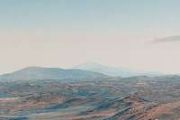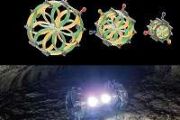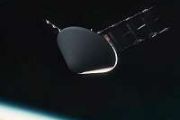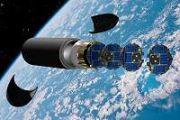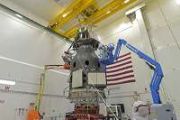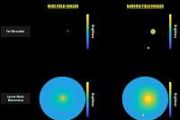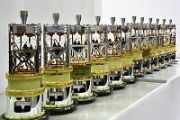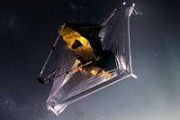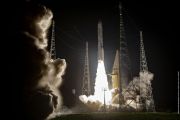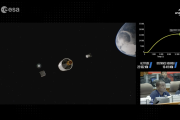
Copernical Team
ispace Achieves Key Mission 2 Milestone with Successful Lunar Orbit Entry
 ispace, inc. (ispace) (TOKYO: 9348), a global leader in lunar exploration, has announced the successful entry of its RESILIENCE lunar lander into lunar orbit. This critical milestone, known as Success 7 of the Mission 2 "SMBC x HAKUTO-R Venture Moon" initiative, occurred on May 7, 2025, at 5:41 a.m. JST (May 6, 2025, 20:41 UTC).
The maneuver was executed from ispace's Mission Control Cente
ispace, inc. (ispace) (TOKYO: 9348), a global leader in lunar exploration, has announced the successful entry of its RESILIENCE lunar lander into lunar orbit. This critical milestone, known as Success 7 of the Mission 2 "SMBC x HAKUTO-R Venture Moon" initiative, occurred on May 7, 2025, at 5:41 a.m. JST (May 6, 2025, 20:41 UTC).
The maneuver was executed from ispace's Mission Control Cente Reveal and Maxar Expand Farsight Platform with High-Resolution Satellite Data Integration
 Reveal Technology and Maxar have announced a strategic partnership to integrate Maxar's high-resolution satellite imagery and 3D data directly into the Farsight platform, enhancing real-time situational awareness for defense users operating at the tactical edge.
This collaboration aims to provide defense personnel with enhanced operational decision-making capabilities by incorporating Maxa
Reveal Technology and Maxar have announced a strategic partnership to integrate Maxar's high-resolution satellite imagery and 3D data directly into the Farsight platform, enhancing real-time situational awareness for defense users operating at the tactical edge.
This collaboration aims to provide defense personnel with enhanced operational decision-making capabilities by incorporating Maxa BlackSky Completes First Gen-3 Satellite Commissioning and Prepares Second Unit for Q2 Launch
 BlackSky Technology Inc. (NYSE: BKSY) has successfully concluded the commissioning of its first Gen-3 satellite, achieving this milestone a full month ahead of schedule. The initial satellite is delivering exceptional tasking-to-delivery performance, backed by strong customer feedback on its early 35-centimeter very high-resolution imagery and AI-driven analytics.
"BlackSky has demonstrate
BlackSky Technology Inc. (NYSE: BKSY) has successfully concluded the commissioning of its first Gen-3 satellite, achieving this milestone a full month ahead of schedule. The initial satellite is delivering exceptional tasking-to-delivery performance, backed by strong customer feedback on its early 35-centimeter very high-resolution imagery and AI-driven analytics.
"BlackSky has demonstrate Moon becomes little more out of reach for NASA's VIPER rover
 NASA is exploring alternative ways to deliver its VIPER rover to the moon after canceling partnership proposals to land a water-seeking robot on the lunar surface.
VIPER, which stands for Volatiles Investigating Polar Explorer Rover, is supposed to study the extreme environment of the moon's south in search of ice and other potential resources.
On Wednesday, NASA announced it can
NASA is exploring alternative ways to deliver its VIPER rover to the moon after canceling partnership proposals to land a water-seeking robot on the lunar surface.
VIPER, which stands for Volatiles Investigating Polar Explorer Rover, is supposed to study the extreme environment of the moon's south in search of ice and other potential resources.
On Wednesday, NASA announced it can Antarctic glacier caught stealing ice from neighbour

Thanks largely to Copernicus Sentinel-1, scientists have discovered that a glacier in Antarctica is rapidly siphoning ice from neighbouring flows – at a pace never before seen. Until now, researchers believed that this process of ‘ice piracy’ in Antarctica took hundreds or even thousands of years, but these latest findings clearly demonstrate that this isn’t always the case.
Plato grows its many eyes

The activities to assemble the European Space Agency’s Plato mission are progressing well now that 24 of the spacecraft’s 26 cameras have been installed. Once in space, Plato will use its many eyes to survey a very large area of the sky and hunt for terrestrial planets. The spacecraft’s supporting element is also coming together in parallel.
Proba-3 achieves precise formation flying

For the first time, two spacecraft in orbit were aligned in formation with millimetre precision and maintained their relative position for several hours without any control from the ground.
MTG-S1 and Sentinel-4 take a step closer to space

Fresh from the cleanroom in Bremen, Germany, the second of the Meteosat Third Generation satellites and the first instrument for the Copernicus Sentinel-4 mission have arrived at Cape Canaveral harbour, in the US.
ESA and PLAYMOBIL join forces to inspire the next generation of space explorers

As the European Space Agency (ESA) ramps up Europe’s ambition in space exploration, it is equally committed to sparking curiosity among young minds. What better way to inspire future explorers than with a fully equipped lunar rover – a creation born from our exciting new partnership with PLAYMOBIL?
ESA releases record breaking forest carbon dataset spanning 15 years
 As ESA's new Biomass satellite begins operations after its April 29 launch, the agency has unveiled its most comprehensive satellite-derived forest carbon dataset yet. Covering the years 2007 to 2022, the release marks a major advancement in global forest biomass monitoring.
This extensive dataset, part of ESA's Climate Change Initiative, compiles information from multiple Earth-observing
As ESA's new Biomass satellite begins operations after its April 29 launch, the agency has unveiled its most comprehensive satellite-derived forest carbon dataset yet. Covering the years 2007 to 2022, the release marks a major advancement in global forest biomass monitoring.
This extensive dataset, part of ESA's Climate Change Initiative, compiles information from multiple Earth-observing 

